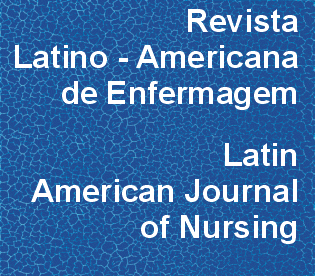Atención a la Tuberculosis: estudio de evaluabilidad
DOI:
https://doi.org/10.1590/0104-1169.3294.2482Resumen
OBJETIVO: verificar si el Programa de Control de la Tuberculosis es evaluable y examinar la viabilidad de construcción de un modelo evaluativo en un municipio prioritario para el control de la tuberculosis. MÉTODO: se trata de un Estudio de Evaluabilidad en un municipio de la región noreste. Para la recolección de los datos se utilizaron las técnicas de análisis documental y la entrevista con informantes clave. En la validación de los indicadores, se utilizó la técnica de Grupo Nominal. RESULTADOS: se describió el programa y fueron elaborados y convenidos el modelo lógico y la matriz de relevancia de los indicadores, caracterizando los elementos estructurales del programa; se definieron indicadores de estructura y proceso, además se formularon las preguntas evaluativas. CONCLUSIÓN: el Programa de Control de la Tuberculosis es evaluable. A partir del análisis lógico operacional, se puede constatar la adecuación de los objetivos del programa para el enfrentamiento de la tuberculosis. Se recomienda proceder a realizar una evaluación sumativa, con enfoque en el análisis de los efectos de la intervención del control de la tuberculosis para reducción de la morbimortalidad.Descargas
Los datos de descarga aún no están disponibles.
Descargas
Publicado
2014-10-01
Número
Sección
Artículos Originales
Licencia
Los derechos de autor son propiedad exclusiva de la Revista Latino-Americana de Enfermagem (RLAE), transferidos a través de la Declaración de Transferencia de Derechos de autor (que está en el formulario individual de declaración) firmada por los autores. Para el uso de artículos, RLAE adopta la Licencia Creative Commons CC BY-NC atribución no comercial (abstracto o código completo de licencia). Con esta licencia es permitido acceder, descargar (download), copiar, imprimir, compartir, reutilizar y distribuir los artículos, desde que para uso no comercial y con citación de la fuente, dando los créditos de autor a la Revista Latino-Americana de Enfermagem. En tales casos, no se necesita permiso de los autores o editores.Cómo citar
Coelho, A. A., Martiniano, C. S., Brito, E. W. G., Negrão, O. G. C., Arcêncio, R. A., & Uchôa, S. A. da C. (2014). Atención a la Tuberculosis: estudio de evaluabilidad . Revista Latino-Americana De Enfermagem, 22(5), 792-800. https://doi.org/10.1590/0104-1169.3294.2482



